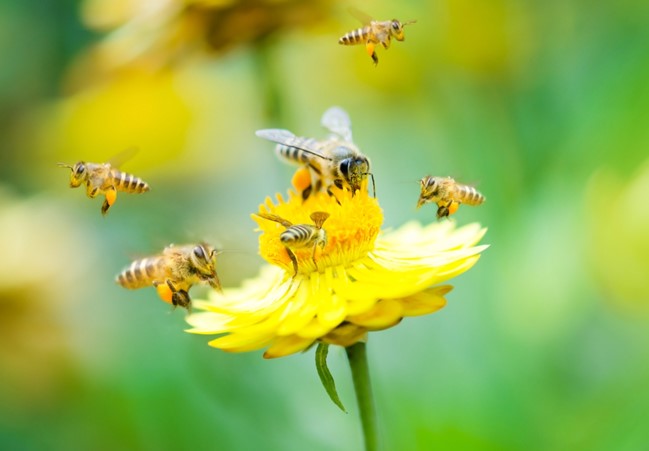Pollinators, such as bees, butterflies, birds, and bats, are indispensable agents of biodiversity, playing a vital role in the reproduction of many flowering plants and the production of a significant portion of the fruits and vegetables that sustain both wildlife and human populations. Their activities underpin the health of entire ecosystems by contributing to food security, economic stability, and the preservation of the natural landscapes that define our planet.
This article from Carbon Green Investments explores the indispensable role of pollinators in biodiversity conservation and the multifaceted challenges they face, underscoring the urgent need for concerted conservation efforts.
The Indispensable Role of Pollinators in Ecosystems
The Mechanics of Pollination
Pollination involves the transfer of pollen from the male structures (anthers) of flowers to the female structure (stigma), facilitating fertilization and the production of seeds. This process is critical for the reproductive success of plants and the production of most fruits, nuts, and berries, which constitute a substantial portion of the diet of humans and numerous wildlife species.
Biodiversity and Ecosystem Services
Pollinators affect biodiversity directly through the pollination of plants, which leads to the production of seeds and fruits, enabling the propagation and survival of countless species. Indirectly, they contribute to ecosystem services that are crucial for life on Earth, including:
- Food Production: By aiding in the growth of a variety of crops, pollinators not only contribute to the global food supply, but also to agricultural biodiversity, which is key to sustainable farming and food security.
- Economic Impact: The economic value of pollinators is immense, with their contributions to global crops estimated to be worth billions of dollars annually. This underscores both the economic and ecological importance of pollinators.
- Habitat and Biodiversity: Many ecosystems rely on the plants pollinated by these creatures for their structure and function. These plants provide habitats, food, and protection for a variety of organisms, creating complex and interconnected ecological networks.
- Climate Regulation: Vegetation supported by pollination plays a significant role in carbon sequestration, helping to regulate the climate and mitigate the impacts of climate change.
The Challenges Pollinators Face
The decline in pollinator populations has become a global concern, with numerous species now at risk due to a variety of human-induced factors.
- Habitat Loss and Degradation
The expansion of agricultural lands, urban sprawl, and deforestation have led to the loss of natural habitats that are essential for pollinators. Habitat degradation, including the fragmentation of ecosystems, not only diminishes the availability of food and nesting sites, but also disrupts the ecological balance, affecting pollinator health and diversity.
- Pesticides and Agrochemicals
The widespread use of pesticides, herbicides, and fungicides in agriculture and urban environments poses significant risks to pollinators. These chemicals can be lethal or sub-lethal, directly affecting pollinators’ ability to navigate, forage, reproduce, and resist disease.
- Climate Change
The impacts of climate change on pollinators are multifaceted, affecting their distribution, behavior, and the phenology of the plants they pollinate. Changes in temperature and precipitation patterns can alter flowering times, disrupt pollinator-plant interactions, and lead to mismatches that affect the reproduction of both parties. Extreme weather events and changing climates further exacerbate the vulnerability of pollinator species.
- Disease and Parasites
Pollinators are susceptible to a range of diseases and parasites, which can be exacerbated by stressors such as habitat loss, pesticide exposure, and climate change. These biological threats can decimate populations, particularly when combined with other stressors.
Strategies for Pollinator Conservation
Addressing the decline of pollinator populations requires a holistic, multifaceted approach that incorporates habitat protection, sustainable agricultural practices, and public awareness and engagement.
- Habitat Restoration and Creation
Protecting existing habitats and creating new ones are critical steps for effective pollinator conservation. This can include the planting of native, pollinator-friendly plants, restoration of degraded landscapes, and establishment of wildlife corridors that facilitate movement and genetic exchange.
- Sustainable Agriculture
Reducing the reliance on harmful pesticides and adopting integrated pest management (IPM) strategies can mitigate the impacts of agriculture on pollinators. Organic farming practices and the cultivation of diverse crops can also support healthy pollinator populations.
- Climate Change Mitigation
Efforts to combat climate change, such as reducing greenhouse gas emissions and promoting renewable energy, are essential for safeguarding pollinators. Conservation strategies must also consider the impacts of climate change, incorporating adaptive measures to support pollinator resilience.
- Public Engagement and Policy
Raising public awareness about the importance of pollinators and the threats they face is crucial for garnering the necessary support for conservation efforts. Policymakers can play a key role by enacting legislation that protects pollinators, supporting sustainable agricultural practices, and funding research into pollinator health and conservation.
Pollinators are crucial for the maintenance of biodiversity, ecosystem health, and human well-being. The challenges they face from habitat loss, pesticides, climate change, and disease may be daunting, but they are not insurmountable. Through concerted conservation efforts, sustainable practices, and global cooperation, it is possible to protect these vital creatures and the ecosystems they support. Ensuring the health and diversity of pollinator populations is not just an environmental imperative, but a necessity for food security, economic stability, and the preservation of our natural heritage.
